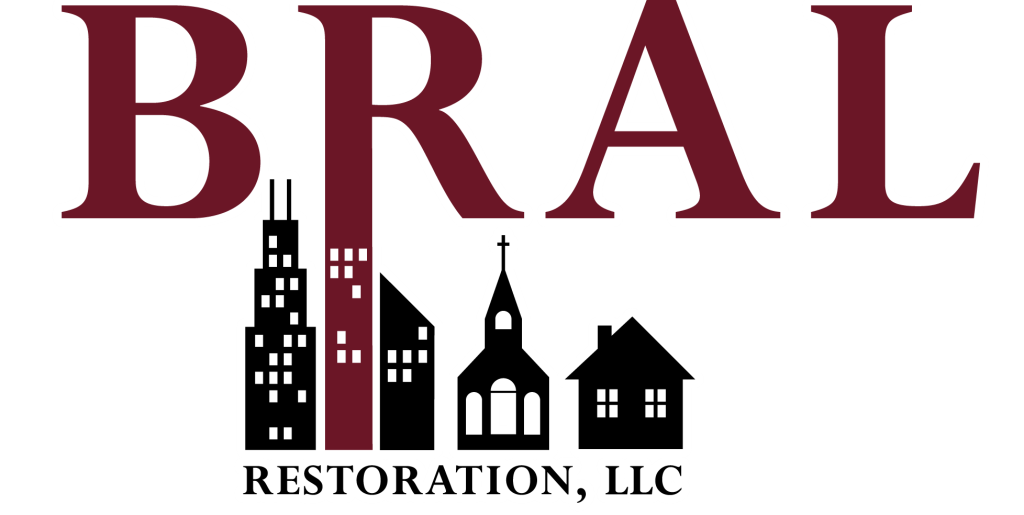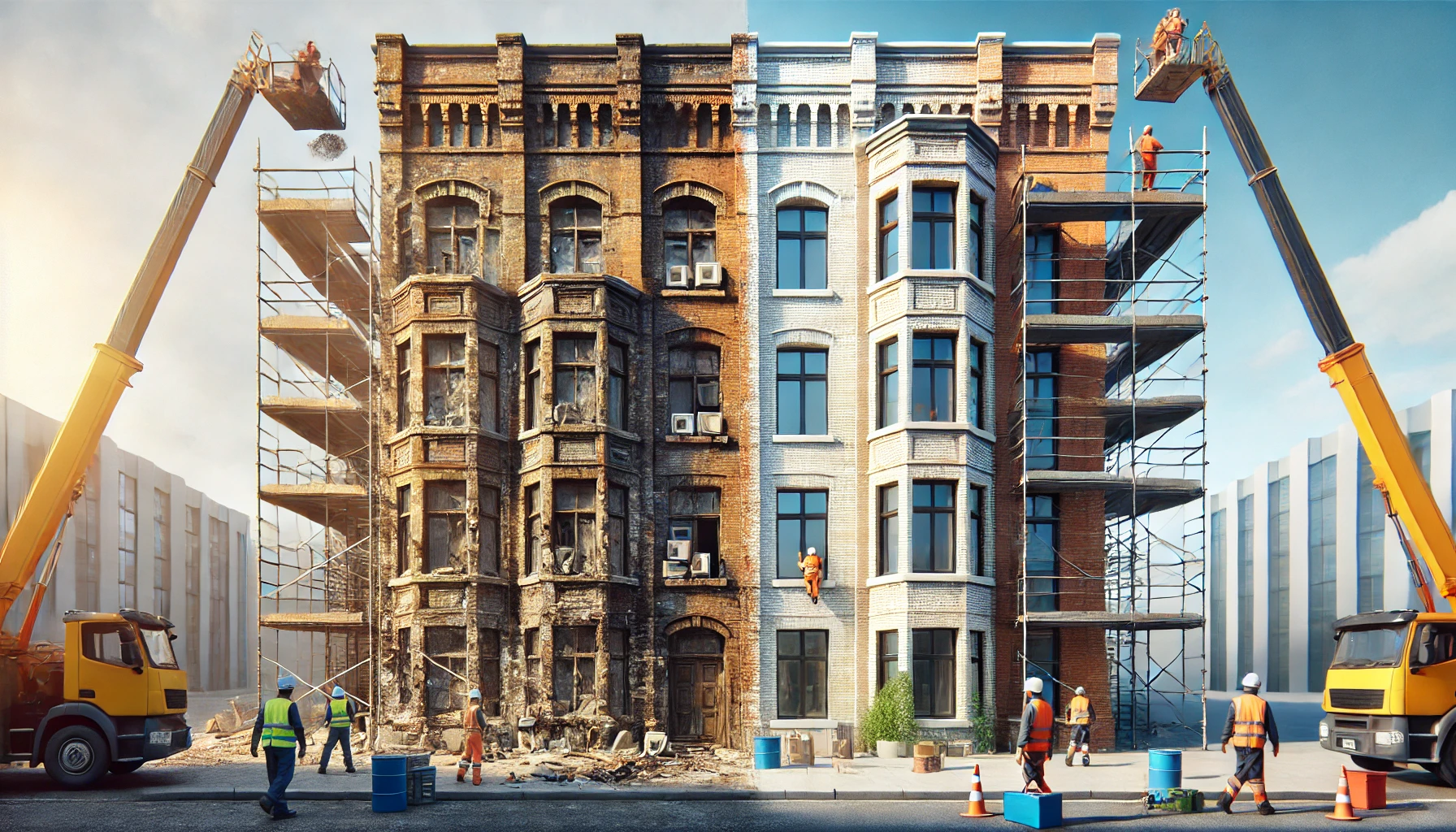- The Game-Changer: Smart Materials in Restoration
In the world of building restoration, there’s a quiet revolution happening—smart materials are stepping in like the superheroes we didn’t know we needed. These materials, like self-healing concrete and advanced sealants, are not just fancy buzzwords; they’re changing the game, one brick (or crack) at a time.
Gone are the days of patching up a crack only to revisit it a year later. Smart materials bring intelligence to repairs. They adapt, respond, and sometimes even fix themselves. Yes, you read that right—self-healing concrete is a thing, and it’s as amazing as it sounds.
At BRAL Restoration, we’ve seen firsthand how these innovations are transforming restoration projects. Whether it’s a luxurious high-rise in Chicago or a hurricane-damaged condo in Florida, smart materials are becoming the MVPs of long-lasting repairs.
- What Are Smart Materials, Anyway?
Don’t let the term “smart materials” intimidate you. Essentially, these are materials engineered to respond intelligently to environmental changes. Think of them as the overachievers of the building world—always adapting, always performing.
Take self-healing concrete, for instance. It’s infused with bacteria that produce limestone when exposed to water. Cracks? What cracks? This concrete seals itself automatically, keeping structural integrity intact without a need for constant maintenance.
Then, there are advanced sealants that do more than just fill gaps. They’re designed to expand, contract, and stay flexible under extreme temperatures, ensuring a tight seal for years to come. These materials are paving the way for smarter and more cost-effective restoration solutions.
- Why Self-Healing Concrete Is a Restoration Rock Star
Self-healing concrete is like that friend who always has your back. Cracks in concrete are inevitable, but this material doesn’t just sit there helplessly. Instead, it springs into action, using embedded bacteria or polymers to repair itself.
For restoration projects, this is a game-changer. Imagine the savings on long-term maintenance costs! At BRAL Restoration, we’ve been exploring this material for projects like parking garages and facade repairs, where durability is non-negotiable.
Plus, self-healing concrete is eco-friendly. By reducing the need for frequent repairs, it minimizes waste and conserves resources. Mother Nature approves, and so do we.
- Advanced Sealants: The Unsung Heroes of Building Repairs
Sealants may not have the glamour of self-healing concrete, but they’re just as vital. Advanced sealants are engineered to withstand the toughest conditions, from freezing Chicago winters to the humid, hurricane-prone climate of Florida.
These sealants are like the Swiss Army knives of restoration. They can bond to almost any surface, resist UV radiation, and remain flexible even after years of exposure. At BRAL Restoration, we’ve used advanced sealants to tackle everything from joint repairs to window caulking, ensuring a watertight finish every time.
And let’s not forget their role in energy efficiency. By preventing drafts and leaks, advanced sealants help buildings maintain a steady temperature, reducing energy costs. It’s a win-win for property owners and the planet.
- Smart Materials and the Longevity of Repairs
Longevity is the holy grail of building restoration, and smart materials are delivering it in spades. Traditional repairs often have a limited lifespan, but smart materials are designed to go the distance.
For instance, using smart materials in facade repairs can extend the life of a building’s exterior by decades. At BRAL Restoration, we’ve seen how these materials reduce the need for repeated interventions, saving clients time and money.
And it’s not just about durability. Smart materials also enhance safety by maintaining structural integrity over the long term. When it comes to restoring historical buildings or high-traffic commercial properties, this reliability is priceless.
- The Efficiency Factor: Saving Time and Money
Let’s face it—restoration projects can be costly and time-consuming. But smart materials are flipping the script. By reducing maintenance needs and repair frequency, they’re making restoration more efficient than ever.
Take concrete repairs, for example. With self-healing concrete, there’s no need to tear out and replace damaged sections. The material fixes itself, cutting down on labor costs and project timelines.
At BRAL Restoration, we’re all about efficiency. Incorporating smart materials into our projects has allowed us to deliver faster, more cost-effective solutions without compromising on quality.
- Sustainability: The Green Side of Smart Materials
Sustainability isn’t just a trend; it’s a necessity. Smart materials are helping the restoration industry go green by reducing waste and conserving resources.
For example, self-healing concrete reduces the need for frequent replacements, which means less material waste. Advanced sealants, on the other hand, improve energy efficiency by eliminating leaks and drafts.
At BRAL Restoration, we’re committed to sustainable practices. Incorporating smart materials into our projects aligns perfectly with our core values of quality and transparency. After all, what’s better than restoring a building while protecting the planet?
- Smart Materials and the Florida Market
Florida’s climate is tough on buildings. From relentless sun to hurricane-force winds, structures in the Sunshine State face unique challenges. That’s where smart materials come in.
Self-healing concrete and advanced sealants are particularly well-suited for coastal property maintenance. They offer the durability and resilience needed to withstand Florida’s harsh conditions, making them invaluable for restoration projects.
At BRAL Restoration, we’re focusing on the Florida market with a strategic approach. By leveraging smart materials, we’re helping property owners protect their investments and extend the lifespan of their buildings.
- The Future of Building Restoration
So, what’s next for smart materials in restoration? The possibilities are endless. From self-cleaning surfaces to energy-generating facades, the future is looking brighter—and smarter—than ever.
At BRAL Restoration, we’re excited to be part of this transformation. By staying at the forefront of innovation, we’re not just restoring buildings; we’re redefining what restoration can be.
As these materials continue to evolve, they’ll open up new opportunities for creativity and efficiency. And we can’t wait to see where they take us.
- Why BRAL Restoration Trusts Smart Materials
At BRAL Restoration, we believe in combining tradition with innovation. Our team has over 100 years of combined experience, but we’re always looking for ways to improve. Smart materials have become an integral part of our approach, helping us deliver safer, more durable, and more efficient repairs.
Whether we’re working on a historic building in Chicago or a beachfront condo in Florida, smart materials are helping us stay true to our core values: safety, quality, transparency, and trust.
So, if you’re considering a restoration project, why not go smart? With BRAL Restoration and the power of smart materials, your building will be in the best possible hands.
Smart materials like self-healing concrete and advanced sealants are more than just innovations—they’re the future of building restoration. At BRAL Restoration, we’re proud to embrace these technologies to deliver repairs that last longer, perform better, and align with sustainable practices.
Ready to take your restoration project to the next level? Let’s make it happen—smartly.

